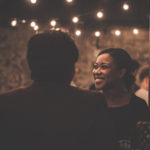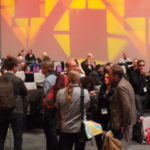
An air-conditioning system in a Zimbabwe office complex modeled on self-cooling termite mounds. A needle that gives painless injections by mimicking a mosquito’s mechanics. A system to transmit tsunami warning data through seawater, like dolphin calls.
These are all examples of biomimicry — looking to nature for innovation on how to solve human problems, from transportation to nutrition, engineering to health care. When the Biomimicry Institute sought to increase its conference footprint, it took its cue from biomimicry and situated itself within a bigger, more elaborate ecosystem. This year, the Institute co-located its annual Biomimicry Education Summit at SXSW Eco — an environment-focused offshoot of the well-known music, film, and technology festival in Austin, Texas — and also sponsored a biomimicry track there.
“This is the first time we partnered with anyone in that way,” said Megan Schuknecht, the Institute’s director of design challenges. “We had an opportunity to attract a larger audience and an audience that may be new to biomimicry.”
SXSW Eco 2015 was held at the Austin Convention Center on Oct. 5–7. The Institute kicked off its program with the Biomimicry Education Summit on Oct. 4. About 110 people attended, most of them educators looking for new ways to engage students and teach biomimicry in a variety of subjects, Schuknecht said. Breakout sessions ranged from how to design a biophilic project that resonates with students to publishing papers that focus on biomimicry. That evening, the Institute held an awards ceremony for its Global Design Challenge, in which entrants were asked to fix a problem within the food system. About 250 people attended, Schuknecht said.
On Oct. 5 and 6, attendees from the Institute’s summit could attend SXSW Eco — including eight sessions centered on biomimicry. These sessions also attracted attendees purely there for SXSW Eco.
For the Institute, the benefits of pairing with SXSW Eco were partly practical. “We’re a very small nonprofit, so handing off some of those big logistical hurdles and being able to leverage the outreach capacity of a larger conference was to our benefit,” Schuknecht said. “We didn’t have to deal with venue, catering, getting blocks of hotels.”
That also meant the Institute didn’t have control over many details, such as planning which rooms the biomimicry sessions would get or how the biomimicry audience would register for the conference. There was a significant amount of back and forth over those sorts of things, Schuknecht said.
In the end, she said, both events — the Biomimicry Education Summit and SXSW Eco — benefitted from the partnership. The Institute plans to continue the co-location model this year, but with a different host: Bioneers, a nonprofit with an environmental educational mission even more closely aligned with biomimicry. Ideally, Schuknecht said, the Institute also would stay involved in some way with SXSW Eco. “It raised our profile and we engaged people who hadn’t really heard of us before,” she said. “But both events had a stronger attendance because of the greater collaboration.”



